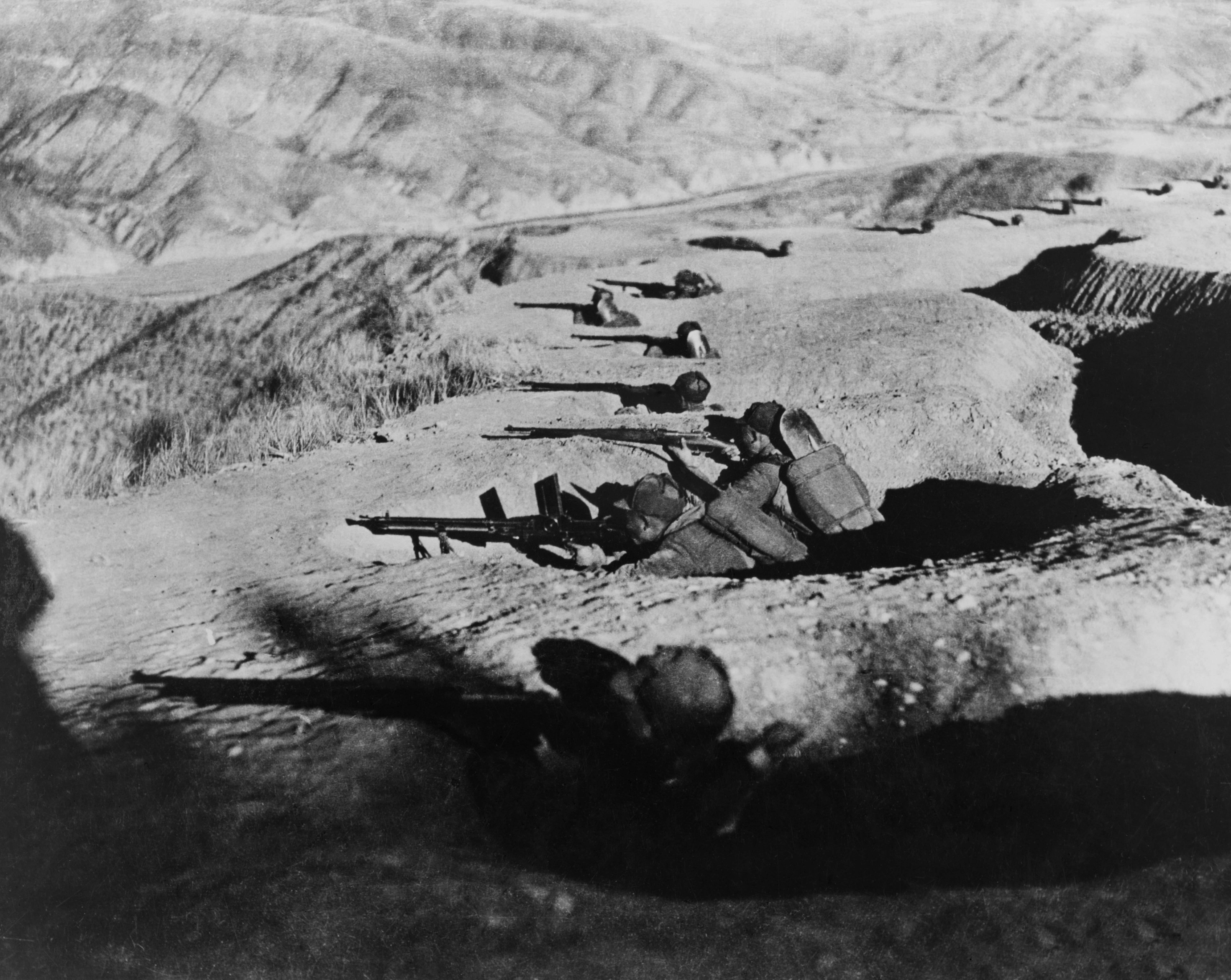Sino-Japanese War of 1937-1945 broke out after decades of Japanese efforts to prevent Chinese unity and extend economic and political control in China. Japan’s influence in China had been rising since World War I (1914-1918). China had been unable to keep Japan from taking the northeastern regions of Manchuria and Jehol Province in 1931 and 1933, respectively. Japan had turned these regions into a puppet state, Manchukuo.

Fighting erupted between Chinese and Japanese troops near Beijing in 1937. An undeclared war was fought until 1941. Japan captured much Chinese territory, though Chinese armies fought fiercely. The Chinese Nationalist forces of Chiang Kai-shek and the Communist forces stopped fighting each other long enough to fight Japan. The Japanese seized key coastal cities and the most advanced industrial regions, but the Chinese moved their capital and industries westward. Chinese guerrillas fought behind Japanese lines. Japan was unable to maintain order in the areas it occupied, despite its creation of a puppet Chinese government in 1940.
In 1941, the Sino-Japanese War became part of World War II (1939-1945). China joined the Allies in fighting against Japan, Germany, and Italy. After 1941, neither Japan nor China gained much ground, except in 1944. That year, a final Japanese offensive forced a Chinese withdrawal from significant territory in central and southern China. The war ended with the surrender of Japan to the Allies in 1945.
